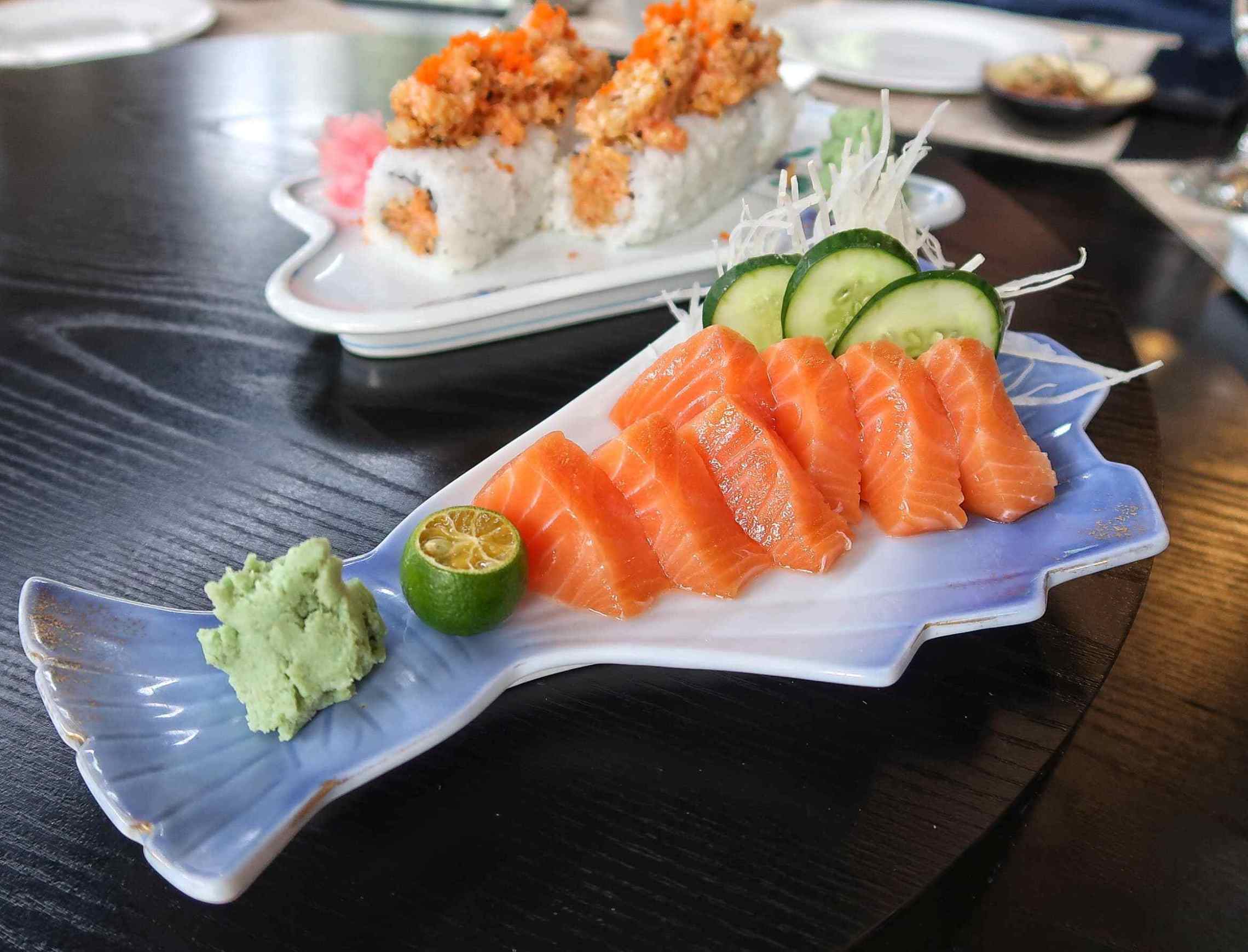
Salmon, A Recent Addition to Sushi Menus.
Did you know that salmon sushi did not exist in Japan in the early 1990s? True story! And even truer – it took a Norwegian marketing campaign, called Project Japan, to bring in salmon and popularize it through Japan and the rest of the world. Here’s a very recent timeline of salmon sushi history:
Food Facts
Salmon is not traditionally used for sushi. In fact, many purist sushi shops still will not serve salmon.
Until the 20th century, wild salmon was considered unsafe to eat raw, as it was potentially plagued with parasites.
Salmon only appeared on sushi menus after 1) the introduction of refrigeration, 2) controlled farming, and 3) most important, Norwegian imports.
Salmon Sushi History, A Timeline
1970s
The history of salmon as sushi in Japan does not start in Japan. It starts across the globe in Norway. Norwegian farmers began producing too many commercially raised salmon and they needed to find a solution to sell their product quickly.
1980s
The answer to preserving the abundance of salmon was to use industrial freezers. However, in the 1980s, there were only so many freezers and space in the country that the Norwegian government found themselves desperate for a greater solution.
Over in Japan, a growing and thriving economy meant overpopulation which led to overfishing. At the same time, the rising incomes made locals more than willing to pay high prices for premium sushi.
This made Japan the perfect market in the eyes of Norway.
Mid-1980s
The mid-1980s were solely focused on how Norway can have Japan accept raw salmon.
Why not sell salmon to cook? In Japan, fish for grilling was cheap and plentiful, but fish for sushi or sashimi is highly-priced and desirable. And that high-spending consumer was exactly what Norway wanted for their salmon.
However, the initial perception of salmon sushi was not accepted. It was the wrong color, smelly, and a health risk because of possible parasites in the fish.
Norwegians persevered for an entire decade with countless trials and errors in their marketing campaigns.
Mid-1990s
Finally, a major frozen food company purchased a large amount of raw salmon for an incredibly cheap price. And that paid off.
Because Nichirei was, and is, an established food brand, the public was more willing to give it a try. And after a short while, they accepted the creamy, soft texture of raw salmon as sushi.
At the same time, salmon was a featured ingredient on the original Iron Chef in Japan and things really began to take off with salmon being in the mainstream.
2000s & Today
Today, salmon sushi and sashimi are widely accepted in Japan and around the world. In fact, the fish is seen in practically all sushi restaurants in Japan. And for the better part of the past decade, it has been Norway now trying to keep up with market demands – how the tides have turned.
Buy your Official JR Pass and Regional Pass!
Stay connected in Japan with Pocket Wifi!
Arrive in style and convenience with Meet & Greet service!
Sign up for my newsletter on the sidebar for blog updates and my travel insider tips! And, check out my vlogs on YouTube!



